8 B2B Marketing Strategies to drive results in 2024

Every B2B company has a marketing plan they follow. The results and metrics derived from the campaigns run as part of this plan provide guidance for fixing things, making adjustments, and trying out ideas to improve the plan. However, with the B2B segment constantly evolving, catching up with popular strategies and trends is essential.
From traditional to digital marketing, B2B marketing has seen many changes. While every company is unique in terms of its identity and marketing strategy, it’s imperative to stay updated with what’s going on in the world .
Clinging on old marketing trends will not drive eyeballs to your products and services. If you genuinely want to stand out, create a distinct personality, and position yourself as an expert in the B2B segment, change is needed.
Table of Contents
- Leverage Account-Based Marketing (ABM)
- Explore marketing automation
- Harness the power of video
- Use email as a powerful marketing tool
- Practice targeted marketing
- Go hard on paid social media advertising
- Build a strong presence on LinkedIn
- Focus on the buyer and customer journey
In this article, we’ll talk about some up-and-coming B2B marketing strategies that you need to focus on immediately. These strategies can help you drive results and amp up your marketing game. Staying ahead of the marketing curve and drafting your unique positioning starts from here.
Let’s dive right into it!
1. Leverage Account-Based Marketing (ABM)
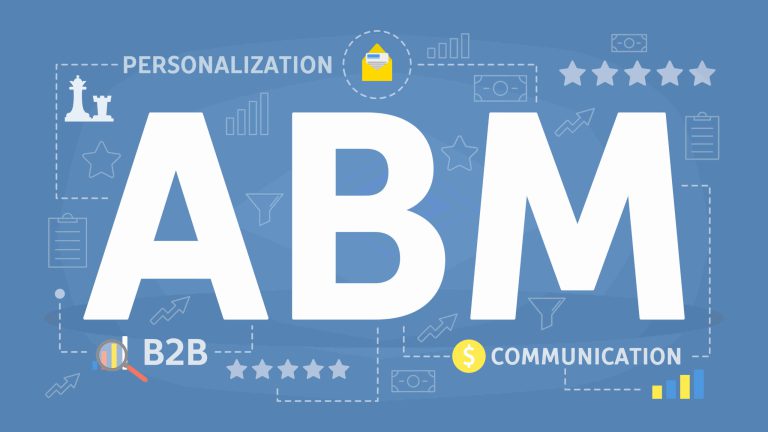
Account-based marketing is a powerful B2B marketing tactic focusing resources and efforts on acquiring target accounts. Instead of targeting everyone, you target someone with a higher chance of becoming a loyal customer.
ABM uses personalization to reach high-quality accounts and convert them into customers through tailor-made marketing. This is done by combining sales and marketing efforts and aligning them with the target account’s customer journey for faster conversion.
With ABM, B2B marketers don’t target a broad audience segment. Instead, they narrow their focus to identify the best-fit accounts for their business and draft their ABM campaigns. These are personalized from messaging to marketing channels, which helps convert them.
92% of B2B organizations said, “ABM is an extremely important part of their overall marketing efforts,” according to a SiriusDecisions report.
Account-based marketing is a highly significant investment for B2B companies because it allows them to focus on high-opportunity and quality relationships. Instead of going rogue with their marketing strategies, ABM will enable them to slow down their processes and tailor their approach to the target account.
With B2B, you target businesses rather than individuals. So, following a rational approach that shows how a company can benefit from your services at a personalized level at every step of the way substantially increases its chances of forming a relationship with you and being a long-term loyal customer.
2. Explore marketing automation

Marketing automation allows you to automate and streamline workflows and processes related to sales and marketing. It covers everything from lead profiling, sending personalized emails to customer profiling and communication. The purpose of using marketing automation is to avoid repetitive tasks, put them on an auto-pilot, and focus on things of greater importance.
Over 50% of B2B companies use marketing automation technology for sales and marketing tasks.
Example of marketing automation:
Let’s say you have a lead magnet on your website to capture your target audience’s contact information. An email sequence may begin as soon as they fill in their details and click on the call to action (CTA) . This sequence will deliver the lead magnet and add them to the newsletter. Post this; they will be part of your email drip campaign.
These processes are part of marketing automation, from sending the lead magnet to adding them to your email lists and receiving the welcome email. Marketing automation makes your tedious processes more straightforward, ensuring a smooth transition.
However, the process will only help if you choose the right marketing automation software and integrate it with your CRM. This doesn’t mean you can completely forget about these things once you put them on automation. It requires regular checks, updates, assessments, evaluations, and improvements.
Some automation software also allows you to instill personalization, an essential aspect of B2B marketing, making automation an even more attractive marketing proposition.
3. Harness the power of video
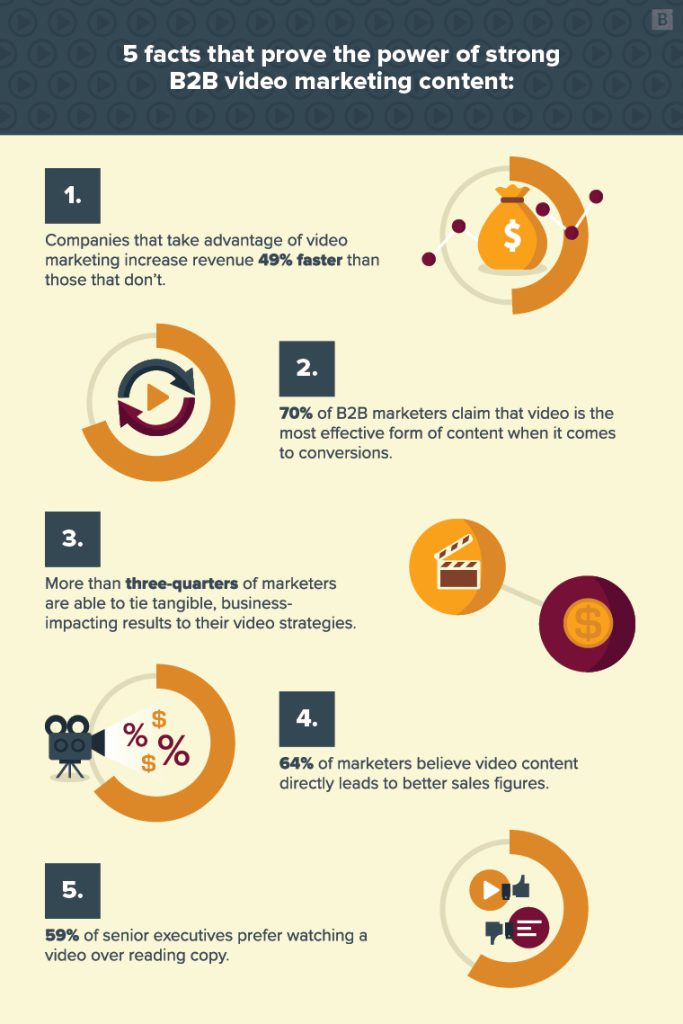
87% of marketing professionals use video as part of their marketing strategy, and it’s undeniably one of the most powerful marketing tools. Text and image content are essential to B2B content creation, but videos make content more eye-catching, engaging, and easy to consume.
It brings a visual aspect to your brand and promotes brand awareness and recall value. With the different types of videos, you can use today for your brand, like explainer videos, testimonials, how-to videos, case studies, and live streams– video marketing calls for an essential space in your B2B marketing strategy.
With video, you can break down complex concepts into simpler ones to help your audience understand you better. It also allows your audience to engage with you one-on-one, allowing you to establish a relationship beyond buying and selling.
Videos help customers know more about your brand, learn from it, and build trust, which is excellent for brand building and customer conversion. You can use these videos on social media, websites, video-sharing platforms, or emails.
From 2017 to 2022, video views have increased by 1500%. In fact, Cisco reported videos are predicted to account for 82% of internet traffic by 2022.
Do you know what the best part is?
Video marketing is cost-effective. You don’t need a big budget to execute, create, or distribute video content. Based on your capacities, you can harness the power of video and generate consistent revenue through it.
Video marketing has a high ROI, and big brands like Apple, Netflix, and Google are already investing heavily in it. This is another reason why exploring the realm of videos benefits your brand.
4. Use email as a powerful marketing tool
59% of B2B marketers say emails are essential for their customer acquisition and revenue generation systems. Given how frequently professionals check emails, if you have the right email marketing strategy with personalized content, you can crack the code and turn it into a profitable marketing avenue for your business.
Personalization is critical for email marketing. At the same time, one wonders if it’s even possible to personalize emails for every person on the list. Automation and email marketing software help. As important as it is to draft an email marketing strategy, you must choose the right email marketing software that helps you build your email lists, automate sequences, target subscribers, segment lists, and track metrics. Since most email marketing software today integrates with CRMs, the process is much more efficient.
Email marketing helps start a dialogue with your audience, provide educational content, advance offers, and sell them your products and services. With email sequences, you can build trust with your audience through problem-solving and convert them into loyal customers. Email marketing companies can help streamline this process, ensuring effective campaigns that drive engagement and conversions.
80% of business professionals believe that email marketing increases customer retention.
A great reason to include email marketing in your B2B strategy is that an email list is yours to keep. The day social media platforms fall or trends die out, an email list will always be yours. You can download it, safely keep it on your hard drive or a cloud drive, and use it to generate and convert leads.
Here’s an example of a B2B email by NewsCred
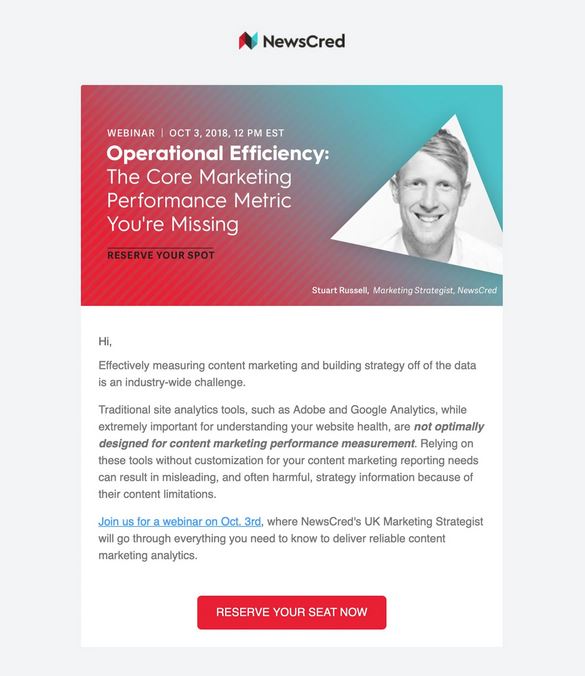
5. Practice targeted marketing
Targeted marketing involves identifying an audience likely to buy your product or service and focusing your marketing efforts on them to make a sale. Over time, you develop products, services, and campaigns best suited to your target market.
It’s one of the most significant ways to enhance customer retention. You can acquire new customers all you want, but retaining old customers and upselling them your offers would be much more profitable in the long run. Moreover, once a B2B customer gets attached to a service provider, they become loyal.
For this to happen, practicing target and retention marketing is essential. You can use emails and ads to maintain relationships with your existing customers. Your job doesn’t end the day the sale happens; it begins from there. To build a strong connection with your customers, you need to practice marketing tactics that help you retain them.
A steady customer base is always good for business because it overrides the cost, resources, and time to acquire new customers and build relationships. This is precisely why focusing on targeted marketing is vital for B2B companies.
Here are some targeted marketing practices that can help you increase your customer retention rate:
- Provide excellent customer service
- Get feedback and act on it diligently
- Help them by solving problems and queries
- Offer incentives for being a loyal customer
- Make them feel special by announcing exclusive features like first product demos, launches, discounts, etc.
- Establish a communication channel to stay connected
- Upsell your offer
6. Go hard on paid social media advertising
Organic marketing is an essential part of any marketing strategy. However, we cannot deny the power of paid media advertising. Both are important to running a successful campaign that promotes your products and services. Each solves a different purpose and brings results, which eventually help drive more revenue and business growth.
Paid media allows for easy and quick gains, and organic media takes time to build trust and authority to show results. A combination of both is ideal for digital growth, and paid media is rapidly gaining momentum, with brands focusing on unique ways to run ads and position their brand in front of the audience.
54% of B2B companies use paid ads along with their content marketing efforts to improve their performance and attract more attention to their brand.
Paid media is one of the best ways to amplify your reach and position yourself in front of your target audience outside your first customer base. It’s cost-effective, and you can get a high ROI with the right targeting strategy.
With the dwindling algorithm of social media platforms, ads are a great way to promote your brand.
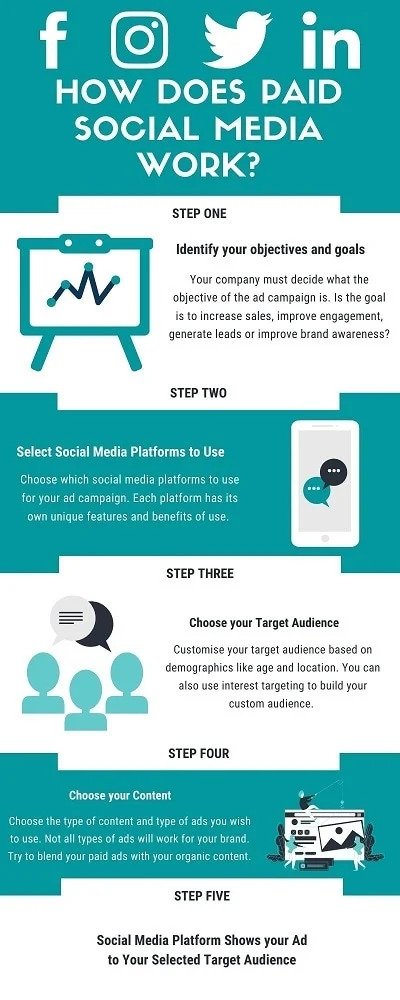
7. Build a strong presence on LinkedIn
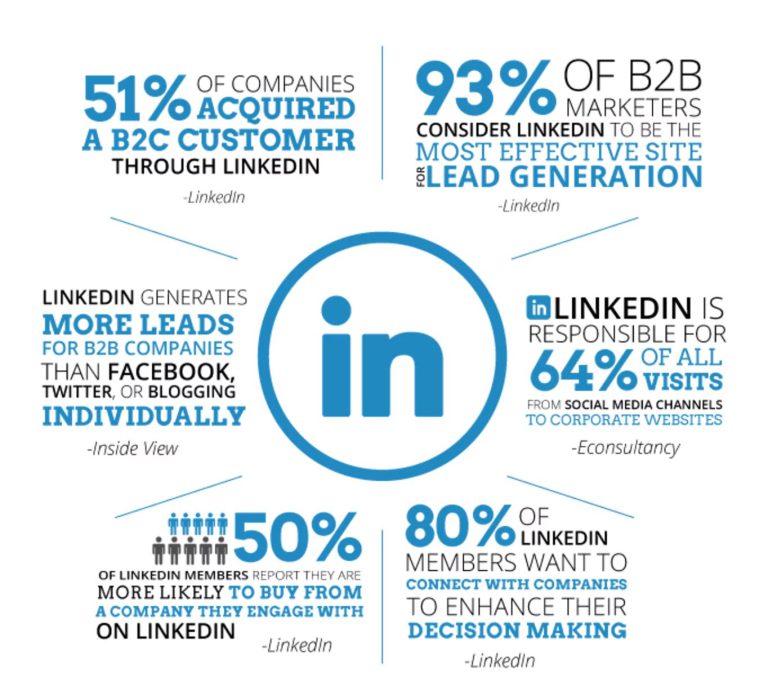
LinkedIn is among the most popular platforms for B2B companies, decision-makers, and professionals.
Since the professional world lies on that platform, it only makes sense for B2B companies to build a presence, reflecting the brand’s personality. It’s not necessary to promote your brand and build awareness through the company profiles. Many B2B companies have decision-makers and c-suite executives who are thought leaders on LinkedIn. It’s through them that a lot of business comes in and converts.
However, you need a consistent strategy to engage with your audience, create content, and add new people to your network. Being a professional platform, it’s great for networking with your audience and initiating a dialogue. Content creation positions your opinions in front of the audience, and its consistent practice helps build trust.
Research analysis by VentureBeat found that 80% of marketing automation users saw their number of leads increase. 77% of automation users also saw the number of conversions increase.
Having a solid presence on LinkedIn is essential if you want to generate leads through social media, one of the fastest-growing business channels. It has a great ROI and revenue growth potential, which you can leverage for your brand with the right LinkedIn marketing strategy, which positions you above your competitors and as a thought leader.
8. Focus on the buyer and customer journey
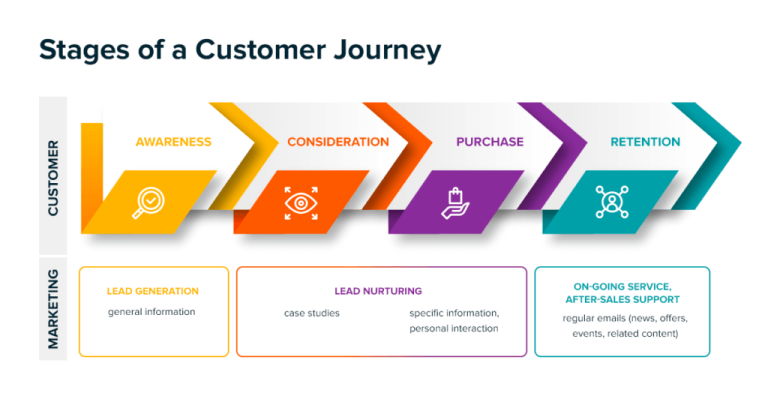
In the end, everything boils down to the buyer. Mapping the customer’s journey and drafting your campaign for the buyer is essential for greater conversions and brand loyalty.
Having a buyer-centric strategy is crucial for B2B marketing. Customers will buy the product or service and don’t care how big your company is or how great your product is designed. All they care about is how your product can help them. So, the debate over benefits vs. features outweighs the benefits for the customer.
Everything you do, every marketing campaign or content you produce, should benefit the customer. It needs to be tailor-made for their problems and needs so you can start a conversation, build trust, and convert them into customers.
Getting to know the buyer further requires you to go beyond purchasing and address neck-deep pain points. It would be best if you built trust to sell to them, which is impossible without understanding them.
So, focus your strategies on the buyer and make them the center of all your marketing strategies to see success.
Conclusion
B2B marketing strategy is an extensive subject that accommodates different strategies that bring different results for other companies. However, keeping up with the changes around you is essential to driving results and converting and delighting your customers.
A dynamic marketing strategy results from impeccable research, customer understanding, and brand positioning. Figuring out what’s best for your customers, what ticks them, and practicing the techniques that make them want to purchase requires strategic planning and implementation.
These eight strategies can help you achieve your goals and achieve B2B success in revenue, business growth, and improved customer relationships and loyalty.
Sources
- Marketo: Account Based Marketing
- Venturebeat: Marketing automation best bets
- Vimeo: B2B Video Marketing Ideas
- Cloudtask: How to do effective b2b email marketing

 11 min read
11 min read










